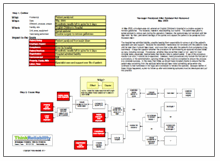A study by the Office of the Inspector General (OIG) of the Department of Health and Human Services found that hospital employees are only reporting fourteen percent of all medical errors. Additionally, the study determined that processes are rarely changed to help prevent similar errors in the future.
The study was conducted by reviewing the medical records of Medicare patients. As a condition of participating in the Medicare program, hospitals are required by federal regulations to track medical errors that harm patients and to implement solutions to protect patients from similar mistakes in the future. All hospitals involved in the study had a method to collect information on medical errors, but all adverse events were not being efficiently captured by the systems in place.
 The study found that out of 293 cases reviewed, only 40 were reported, 28 led to investigations and only five resulted in changes in the hospital’s processes. Additionally, the inspector general estimated that more than 130,000 Medicare beneficiaries experience at least one adverse event in a hospital in one month so there is a plenty of room for improvement in patient care.
The study found that out of 293 cases reviewed, only 40 were reported, 28 led to investigations and only five resulted in changes in the hospital’s processes. Additionally, the inspector general estimated that more than 130,000 Medicare beneficiaries experience at least one adverse event in a hospital in one month so there is a plenty of room for improvement in patient care.
The study found a number of reasons that adverse events and medical errors were not being reported. Confusion over requirements was one cause of the under reporting because hospital employees did not always recognize that a particular event harmed a patient and was required to be reported. Also, there were cases where employees assumed someone else would report the incident or they considered the incident to be so common that it didn’t need to be reported. There was also a tendency to not report things that were considered to be isolated events that were unlikely to recur.
To help combat these causes, the OIG report recommends the development of a standard list of medical errors that should be tracked and reported. The OIG also recommends that guidance be developed and provided for the accreditors of hospitals since they do not typically investigate adverse event collection methods. Additionally, some consumer groups are pushing for public reporting of medical errors to help pressure hospitals to improve their policies and practices.
Click on “Download PDF” above to view a high level Cause Map of this event which is an intuitive, visual root cause analysis of this issue.









